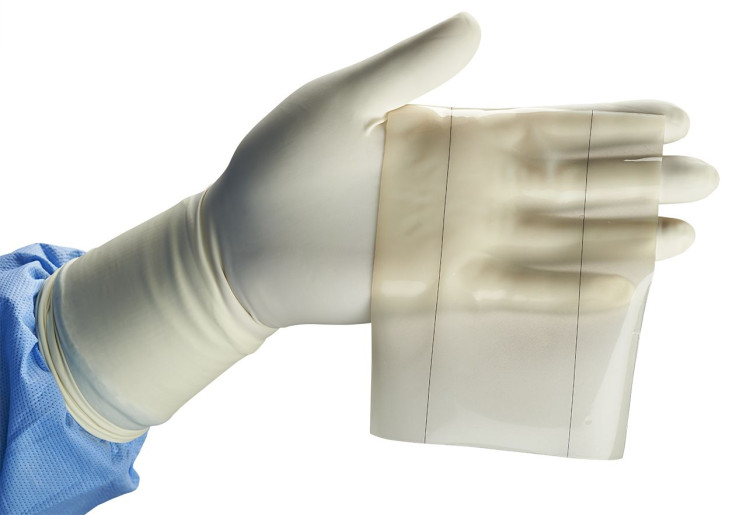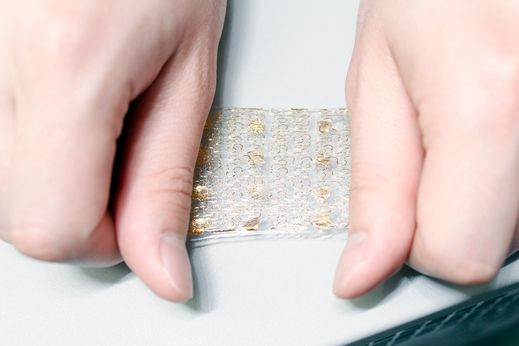Second Skin: Ingenious Ways Scientists Are Replacing Human Skin, From Spider Silk To Golden Sensors

Not only is skin the biggest organ in the body, it is also one of the most important. Skin acts as a barrier between us and the outside world, keeping necessary moisture from escaping the body and preventing harmful pathogens from getting inside. Therefore, serious skin injuries can be devastating, and even life-threatening. Thankfully, scientists have made amazing strides in replacing skin with truly ingenious techniques, ranging from common skin grafts to robotic skin.
Home-Grown Skin
Today, the most common way to replace damaged or lost skin is through a skin graft. This process involves taking healthy skin from one part of the body and transplanting it to a damaged area. However, not all patients have enough skin available for a healthy transplant. When this happens, doctors can grow new skin for them, but the process can take many weeks. Recent medical innovations in stem cell technology may help to address this problem.
A 2013 study, conducted by researchers from the University of Granada in Spain, explains how a specific type of stem cell, known as Wharton’s jelly mesenchymal stem cells, can be converted into two primary types of human tissue. The team accomplished this feat by extracting the stem cells from umbilical cord tissue and then using them to regenerate human cells. According to a press release, the researchers believe that one day this technique will be used to create skin banks so doctors can have instant access to organs.
In a 2014 study, researchers succeeded in growing skin from adult stem cells known as induced pluripotent stem cells. Lab testing showed no significant differences in structure or function between the artificial patches and the real human skin, and the team hopes the model could be used to replace animal skin during cosmetic and pharmaceutical testing, The Daily Mail reported.
Animal Inspiration
Integra Dermal Regeneration Template is a two-layer skin generation system made from a combination of collagen and cow and shark tissues. The top layer prevents the wound from contracting while new cells and blood vessels grow, and the lower layer prevents bacteria from getting inside and causing infection, Discover Magazine reported. The FDA-approved product is improving on the treatment options available for patients that have experienced traumatic injury, such as soldiers wounded in war.
The Integra mesh is available in four different sizes, stored at room temperature, and generally has a two-year shelf life. During application, each piece of Integra is coveredin an antibiotic-soaked sponge. The sponge is attached to a vacuum, which helps to suck out fluids during the operation — a step critical to reducing scarring during the healing process. Within weeks, the collagen is absorbed and the body starts to regenerate its own skin cells.

Although Integra is an impressive tool in skin reconstruction, its use is currently limited, since it's only able to be used on flat skin surfaces. Another possible skin alternative has a bit more flexibility in terms of its application, and gets inspiration from one of Earth’s least popular creatures: the spider.
A 2011 study conducted by scientists at Medical School Hannover in Germany found human skin cells can be grown in mesh made from the silk of golden silk orb-weaver spiders. To begin the process, the scientists milked the spiders by rubbing their abdomens to collect the silk they deposit, LiveScience reported. The gathered silk was then woven into a mesh on silk frames. The team placed human skin cells on the mesh and found that the cells flourished into tissue when given proper nutrients, warmth, and air. While more research is needed before this method can be utilized in a real-world setting, the idea is still a promising alternative to organic donations during skin grafts.
"I think in the long term, for widespread daily clinical use, synthetic silk fibers providing the same mechanical and cell culture properties will be needed," Hanna Wendt, a tissue engineer involved in the project, told LiveScience.
Build It Better
Researchers don’t need to turn to organic sources for artificial skin. Sometimes technology can be just as helpful. A group of Korean and U.S. researchers have developed a polymer designed to mimic both the elasticity and sensitivity of human skin, all without a single organic component. To create this robotic skin, the team infused the polymer with a dense network of sensors made from ultrathin gold and silicon, Technology Review reported. Composed of as many as 400 sensors per square millimeter, the polymer is described as the most sensitive material created so far.

Dustin Tyler, a professor of biomedical engineering at Case Western Reserve University, told Technology Review that although this innovation in sensing technology is exciting, there's still more work to be done before it becomes available to the public. “This proof-of-concept demonstration is interesting, but there is a lot of hard work that remains to show the robustness and performance necessary to translate this device to usable prosthetic hands,” he said.
Science is not only making artificial skin act more realistic, it's making it appear more real as well — the gold polymer artificial skin can reach roughly the same temperatures of human skin. In another study, researchers at USC Institute for Creative Technologies are developing ways to recreate the effects of skin microstructures—the tiny visible details on your skin such as wrinkles, hairs, and pores.

“Advances in measuring and simulating the scattering of light beneath the surface of the skin have made it possible to render convincingly realistic human characters whose skin appear to be fleshy and organic,” the authors wrote.



























